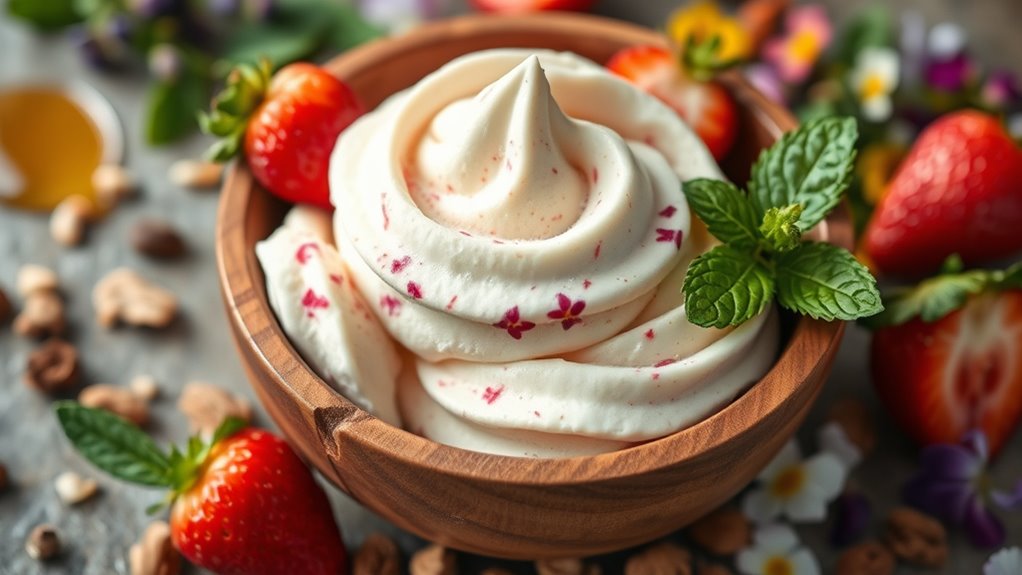Start with a lush custard: warm organic whole milk and heavy cream meet sugar, then whisk in egg yolks until the mixture thickens and coats a spoon. Temper carefully, add vanilla and a pinch of salt, then strain and chill until icy cold. Churn patiently for a silkier texture, freezing the base briefly between folds and aiming for a glossy finish. Serve soft with a citrus kiss or espresso note, and discover how flavor truly shines as you continue to explore.
Ingredients and Quantity
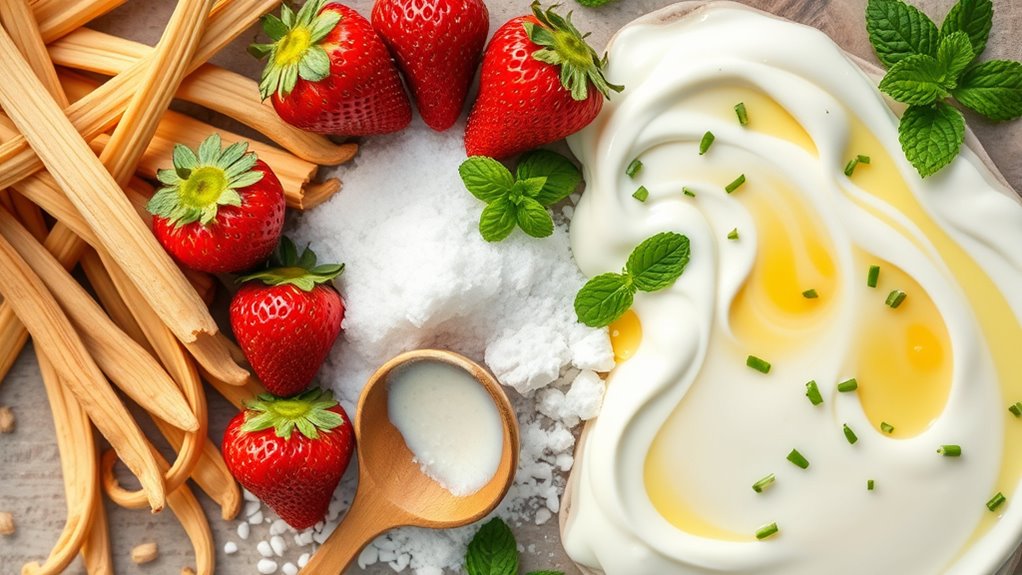
To make creamy organic ice cream, gather these ingredients in measured, fresh quantities: 2 cups organic whole milk, 1 cup organic heavy cream, 3/4 cup organic sugar, 4 large organic egg yolks, 1 teaspoon pure vanilla extract, and a pinch of salt.
You study each component, feeling the freedom in choosing organic ingredients and the promise of flavor variations. The list becomes more than a recipe; it’s a declaration of taste, texture, and independence. Use the table below to mirror choices and consequences, a subtle map of balance and risk.
| Milk & Cream | Sweetener & Eggs | Flavor & Salt |
|---|---|---|
| 2 cups | 3/4 cup | 1 tsp, pinch |
| Organic | Organic | Salt dash |
| Fresh | Fresh | Enhances |
Preparations
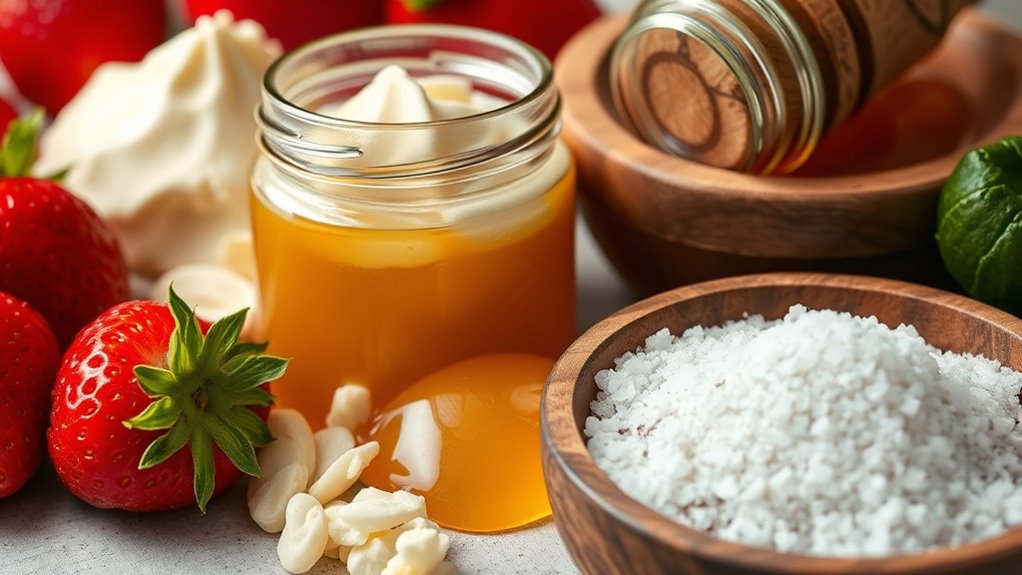
As you begin preparations, gently warm the milk and cream until they’re just shy of a simmer, then whisk in the sugar until it dissolves smoothly and the mixture glows with pale I-need-a-scoop richness. You’ll temper the base with a pinch of salt, then let it rest briefly so flavors marry. While it cools, set up your flavoring plan: branch into clean, distinct notes that invite exploration. Strain any solids, clarifying the liquid, before adding your chosen flavorings—vanilla, cocoa, or fruit puree—so they’re evenly dispersed. Pour into a cold vessel, cover, and refrigerate until completely chilled. When you churn, you’ll release ice cream’s texture and aroma, enabling creative flavor combinations to emerge with crisp, clean definition.
How to Cook
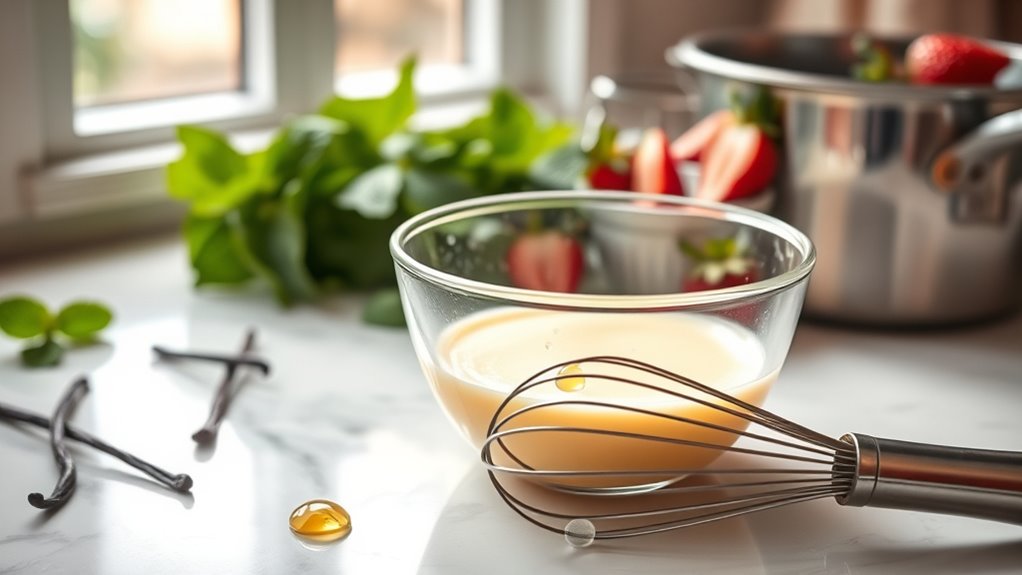
- Focus on timing, texture, and balance when cooking ice cream.
- Master heat, chill, and emulsification techniques to enhance flavor without scalding dairy.
- Begin with a gentle simmer, whisking yolks and sugar to create a pale, silky custard.
- Temper the custard with hot milk to avoid curdling.
- Look for the custard to coat the back of a spoon and glide lightly without running.
- Chill the custard thoroughly before proceeding.
- Churn the mixture until it reaches a softly firm consistency.
- Adjust texture by managing fat ratios and incorporating air carefully.
- Avoid overworking the mixture to prevent toughening the final scoop.
- Use precise measurements, clean equipment, and practice patient timing.
- Enjoy the process and savor every bite of your naturally sweet, velvety ice cream.
How to Serve
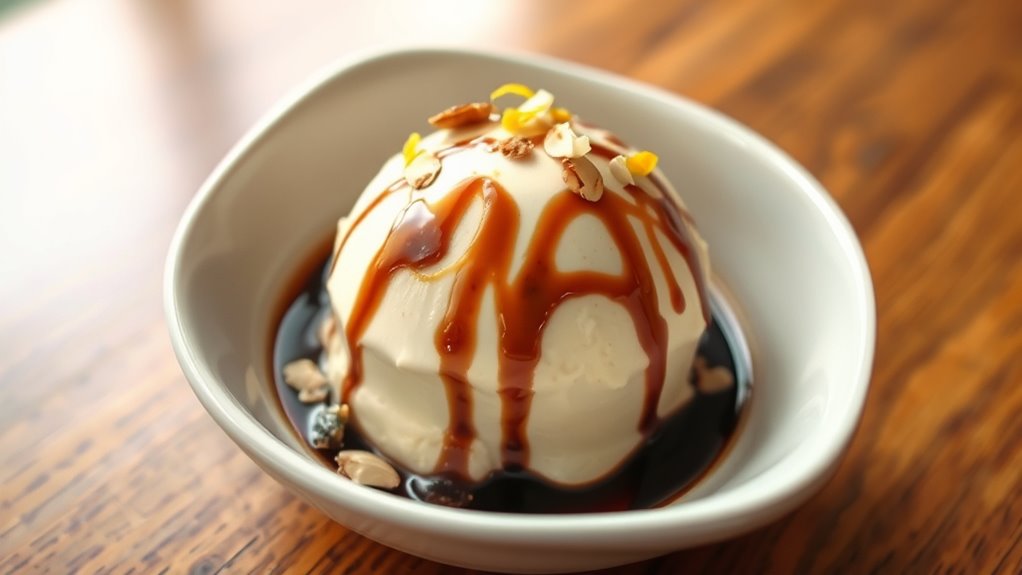
A perfectly served scoop starts with temperature and texture in harmony: ice cream should arrive at the plate slightly soft, with a glossy sheen and a gentle melt that releases aroma without rushing to puddle. You’ll pair it with thoughtful contrast: a citrus zest twist, a drizzle of dark espresso, or a whisper of roasted almonds. Serving suggestions lean into balance—cold scoop, warm sauce, subtle crunch—so every bite snaps into place. Presentation ideas matter as much as flavor: narrow bowls that catch the shine, a clean wipe along the rim, a deliberate angle to reveal color and sheen. You guide the plate, not overwhelm it, letting natural beauty and aroma speak. Freedom in serving, precision in detail.
Tips

Staying sharp with technique keeps your organic ice cream working for you: chill your equipment, measure ingredients cleanly, and don’t rush the churning—low and steady yields a silkier texture. Tips keep flavor alive and texture true, so treat every step as a craft. Freeze your base briefly between folds to trap air softly, then rest the mix before serving to mellow sweetness. Adjust sweetness with restraint, tasting as you go. When you’re ready, experiment with Flavor combinations that excite you—think citrus-zest brightness, roasted nut essence, or swirls of caramel. For finish, present with simple, purposeful garnish. Serving suggestions matter: scoop firm, hold a moment, and pair with a complementary bite or sauce to elevate the experience without overpowering the ice cream.
Food Value and Benefit
Organic ice cream isn’t just a delicious treat—it offers significant nutritional value and health benefits when made with carefully selected ingredients. Each spoonful combines cultured dairy, real vanilla, and subtle fruit notes, providing a wholesome source of energy and mood support.
Food Value:
- Rich in calcium, essential for strong bones and teeth
- Provides high-quality protein for muscle maintenance and growth
- Contains probiotics from fermentation that promote gut health
- Includes natural vitamins such as Vitamin A and B vitamins from dairy
- Supplies minerals like phosphorus and potassium important for overall bodily functions
Benefits of Eating This Recipe:
- Supports bone health and density through calcium intake
- Aids muscle repair and upkeep thanks to protein content
- Enhances digestive balance with beneficial probiotics
- Offers clean, natural sweetness without excess hormones or additives
- Helps maintain steady energy levels and mood throughout the day
- Encourages mindful eating with wholesome, nourishing ingredients
Enjoying this organic ice cream means savoring both great flavor and meaningful nutrition that supports your health and well-being.
Frequently Asked Questions
Can I Substitute Dairy With Non-Dairy Milks in This Recipe?
Yes, you can substitute dairy with non-dairy milks. Think of a case study: a friend swapped almond milk and loved it. You’ll explore dairy alternatives, balancing texture and sweetness with non dairy options for creamy results.
How Long Does Homemade Organic Ice Cream Keep Fresh?
Homemade organic ice cream stays fresh for about 1 to 2 weeks in the freezer. For best flavor, wrap tightly and use airtight storage. Storage tips help preserve creaminess, and freshness duration grows when you minimize air contact.
Can I Make This Recipe Vegan Without Eggs?
Yes, you can; swap in vegan egg substitutes and dairy-free alternatives, and you’ll still savor creamy texture. Embrace freedom, you’ll blend with patience, tasting results that celebrate Vegan egg substitutes and Dairy free alternatives in every spoonful.
What Equipment Is Essential for Churning by Hand?
You’ll need a sturdy wooden spoon or an old-fashioned churn; for efficiency, consider an ice cream maker as your backup. You’ll feel freedom in the motion, savoring the rhythm, as creamy texture emerges with patient, deliberate stirring.
Are There Common Flavor Variations for This Base?
Yes—you can mix flavor combinations like vanilla+raspberry or cardamom+orange, and tailor them with seasonal ingredients such as berries in summer or pumpkin in fall, crafting bold, free-spirited scoops that sing with simplicity and texture.
